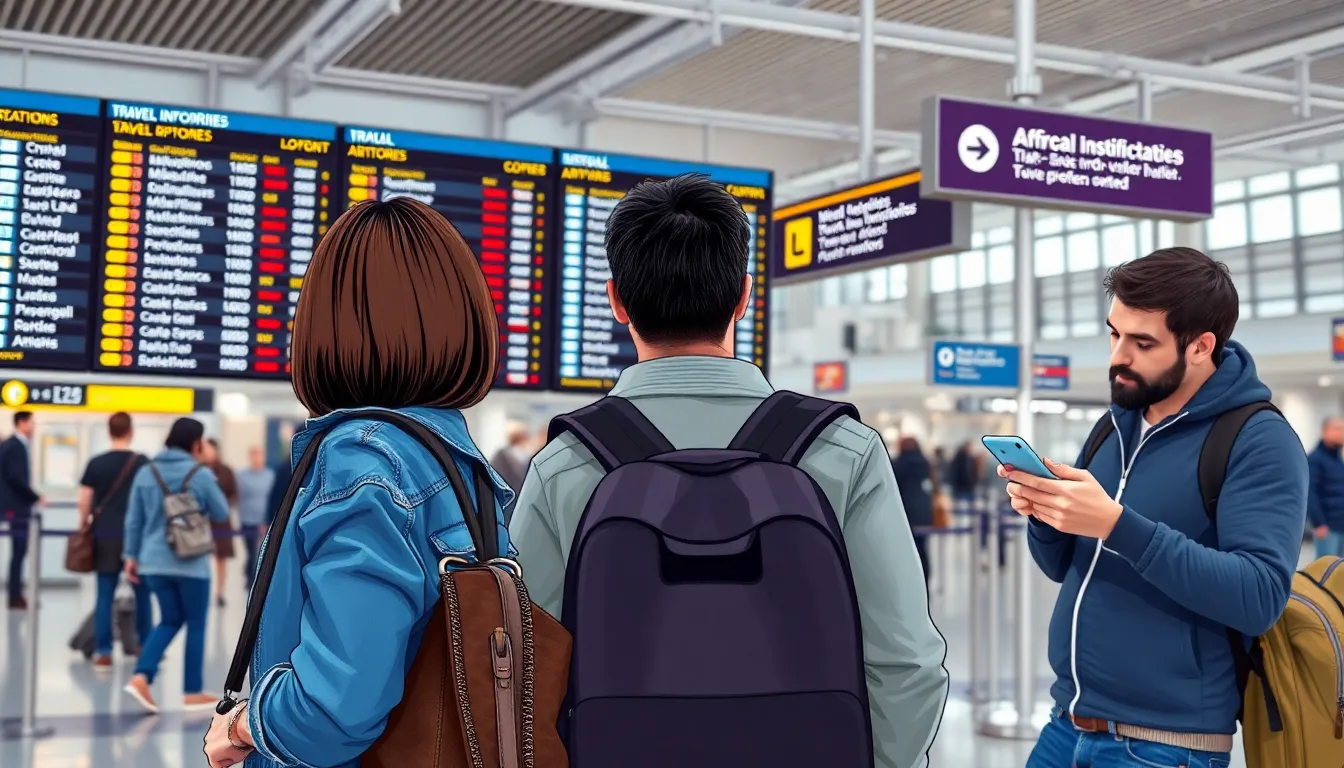Traveling can be one of life’s greatest adventures, but it can also turn into a comedy of errors without the right preparation. Imagine arriving in a foreign land only to find out that your dream destination has a surprise travel advisory that could turn your vacation into a game of dodgeball with local regulations. It’s not just about packing sunscreen and your favorite flip-flops; knowing the latest travel advisories can save you from unexpected detours and awkward encounters.
Table of Contents
ToggleUnderstanding Travel Advisory
Travel advisories provide vital information about safety conditions in specific destinations. Staying updated on these advisories helps travelers make informed decisions.
Definition of Travel Advisory
A travel advisory serves as an official notice from government entities, often outlining health risks, safety concerns, and potential hazards in certain locations. Typically issued by foreign affairs departments, these advisories categorize risk levels using a specific scale. Levels range from “Exercise Normal Precautions” to “Do Not Travel”. Travelers rely on these advisories to assess current conditions and prepare accordingly.
Importance of Travel Advisory
Travel advisories hold significant importance for ensuring traveler safety. Checking the advisory before departure can prevent unexpected issues. Updated advisories may reveal information about weather events, political instability, or health outbreaks. Potential travelers benefit from understanding local laws and cultural customs through advisories. Awareness of advisories leads to better preparation and a more enjoyable travel experience.
Types of Travel Advisories

Travel advisories fall into several categories, each providing essential information for travelers. Understanding these categories helps in making informed decisions.
Government Issued Advisories
Government issued advisories convey official guidance about safety in specific regions. They categorize risks into levels such as “Exercise Normal Precautions” or “Do Not Travel.” Travelers receive alerts regarding civil unrest, political situations, or other critical circumstances affecting safety. Regularly reviewing these advisories minimizes potential risks during trips. Governments, like the U.S. State Department, frequently update their advisories, ensuring travelers have access to current information.
Health Advisories
Health advisories inform about health-related risks in particular destinations. Travelers may encounter warnings regarding disease outbreaks or vaccinations recommended before entering a country. Crucial information includes any required health documents, such as proof of vaccinations, especially in regions experiencing health crises. Keeping updated on health advisories enhances overall travel safety, allowing individuals to take necessary precautions. These advisories often originate from health organizations and governmental health departments.
Security Advisories
Security advisories focus on potential security threats in travel destinations. They address issues like terrorism, crime rates, and violent protests, advising travelers on areas to avoid. Information about local law enforcement response and protocols can also be included. Staying informed through security advisories helps travelers maintain awareness of their environment. Many agencies, including international organizations, regularly issue these advisories to enhance safety awareness.
How to Interpret Travel Advisories
Interpreting travel advisories requires understanding the levels of risk and the recommended actions provided by authorities. Travel advisories serve as essential tools for informed decision-making.
Levels of Risk
Levels of risk categorize the safety of a destination. Advisory systems typically feature four main classifications:
- Exercise Normal Precautions: Indicates standard safety measures apply.
- Exercise Increased Caution: Suggests travelers remain alert to potential risks.
- Reconsider Travel: Warns of heightened risks that could impact safety and security.
- Do Not Travel: Marks locations where significant risks exist, making travel inadvisable.
Travelers should assess these levels before planning, as risks may include health threats or political instability.
Recommended Actions
Recommended actions accompany travel advisories to assist travelers in minimizing risks. Each advisory recommends specific strategies tailored to the risk level.
- Exercise Normal Precautions: Maintain standard safety practices like securing personal belongings.
- Exercise Increased Caution: Monitor local news for updates and maintain a low profile.
- Reconsider Travel: Research alternative destinations and consider postponing trips.
- Do Not Travel: Avoid all travel to these areas unless absolutely necessary.
Following these actions can significantly enhance safety during travel.
Resources for Travel Advisories
Travel advisories play a crucial role in ensuring travelers stay informed about their destinations. Utilizing the following resources can greatly enhance safety and preparedness.
Official Government Websites
Official government websites provide travelers with reliable and up-to-date information on safety conditions. For instance, the U.S. Department of State offers detailed travel advisories categorized by risk levels. Each advisory presents crucial insights such as political stability, health concerns, and safety measures. Travelers should frequently check these sources, as advisories are updated in response to changing situations. Other countries also maintain similar platforms, making it important to review the relevant site before traveling abroad. Accessing these official resources builds confidence and leads to well-informed travel decisions.
Travel Safety Apps
Travel safety apps enhance travelers’ ability to access vital information on the go. Many apps offer real-time alerts about potential threats such as natural disasters or political unrest. These applications often include features for tracking local news and weather patterns, making on-the-ground awareness easy. Some popular apps also provide emergency contact numbers and location-based services. By downloading these tools, travelers equip themselves with essential resources that promote safety and preparedness. Monitoring these apps throughout the journey ensures travelers remain aware and ready for any changes encountered during their trips.
Conclusion
Staying informed about travel advisories is essential for any traveler. By understanding the various risk levels and recommended actions, individuals can make well-informed decisions that enhance their safety and enjoyment. Regularly checking official government websites and using travel safety apps ensures access to the latest information.
Proper preparation not only minimizes risks but also allows travelers to fully embrace the adventure ahead. With the right knowledge and resources, navigating the complexities of travel becomes a more manageable and rewarding experience. Prioritizing awareness will lead to smoother journeys and unforgettable memories.



